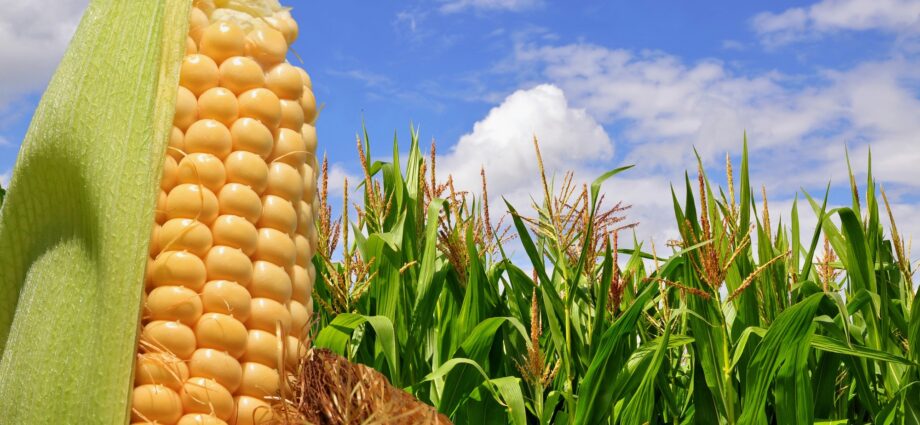
Get the Popular Science daily newsletter💡
Breakthroughs, discoveries, and DIY tips sent every weekday.
Corn really likes its space–so much so that it has a unique way of letting its fellow crops know if the field is getting too crowded. The preference doesn’t stem from claustrophobia. Instead, researchers discovered that maize (Zea mays) releases a gaseous defense mechanism to protect itself and surrounding plants from potentially dangerous pests and pathogens.
A team at China’s Zhejiang University recently studied crowded corn crop conditions to see how close quarters influences outside threats, including ravenous insects and microbial diseases. After conducting a volatile profile of multiple maize test fields, agricultural scientists found that certain conditions will trigger a plant’s immunoresponse,similar to how it may physically adjust its growth shape to harvest the most sunlight possible.
Researchers soon observed a cascading chemical chain of events occurring in the highly dense fields. Once it sensed the leafy walls closing in on it, a maize plant would release a volatile gas called linalool. The terpene alcohol is produced by multiple plant species and can be found in many perfumes and cleaning products. It often is described as possessing a complex floral aroma similar to a spicy wood or French lavender. Neighboring corn that detected these fumes subsequently increased its roots’ production of hormones like jasmonate. The roots then secreted additional benzoxazinoids– a class of chemical compounds capable of altering the soil’s bacterial makeup in order to protect them from hungry pests.

“Above a threshold concentration, linalool triggers a chemical response in the root of maize plants (Zea mays). This ultimately leads to alterations to the microbial community in the soil—the microbiome—which has a lasting effect on plant growth and defense,” explained a Perspective article that accompanied the team’s paper recently published in the journal Science.
The team noted that high-density corn fields boosted their chemical defenses against their caterpillar foes after only three days. These subtle soil changes lasted far beyond the original crop, as well. Subsequent generations of corn appeared to better resist not only the caterpillars, but also soil pathogens and nematodes. This indicates that a crowded field will often alter the soil to help boost survival rates for future plants.
However, there is a drawback to this ingenious defense. The study’s authors note that the maize reduced its overall growth rates in these situations, as more resources were pooled into the defense responses. Despite this, the discovery may soon provide farmers with better, greener strategies to protect their crops without relying on harmful pesticides.
“Harnessing this natural defense pathway through breeding, microbial inoculants, or synthetic biology could enable the development of crops that are more resilient and require fewer chemical inputs,” the study’s authors concluded.

More deals, reviews, and buying guides
The PopSci team has tested hundreds of products and spent thousands of hours trying to find the best gear and gadgets you can buy.

